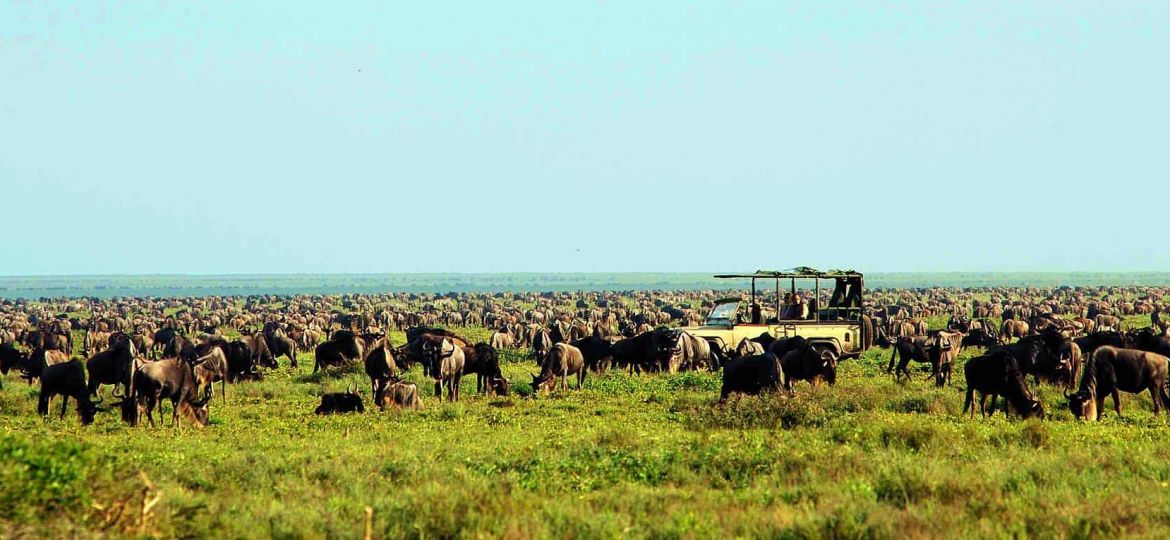
A big draw of the Ndutu Region is to see the full circle of the Great Migration, from the return of the herds to graze in December, and then the calving which takes place in January and February, and then the departure of the herds again in April as they start making their journey northwards. Calving season is particularly dramatic: a million wildebeest give birth to 8000 babies every day, and as these newborns take their first steps, they’re targeted by lion, leopard, cheetah and hyena.
The Ndutu Region forms part of the northern section of Ngorongoro Conservation Area and stretches to the unfenced southern reaches of the Serengeti National Park, a meeting point between these two incredible wilderness areas. This section of the park is made up of rolling grasslands peppered with alkaline lakes that attract flocks of flamingos, as well as acacia woodlands.
Over two million migratory animals made up of several species wildebeest, zebra, eland and Thompson gazelle move clockwise from Ngorongoro and the Southern Serengeti to the Northern Serengeti into Kenya and back.
This migration route happens because they follow the rains and therefore the new grasses which grow up rapidly. The Ndutu area is famed for its short grass plains which grow grass which is particularly rich in nutrients and sustains the migratory animals whilst they have their babies. Traditionally the wildebeest and zebra tend to calve on these plains with a peak around February which makes for a beautiful natural spectacle and some exciting predator hunting behaviours.
The Wildebeest continue to mature on the short grass plains well into March and April gaining strength for the long migration to the North following the rains and the new pastures.
game drive
The prime game viewing spot in the Ndutu Region is around Lake Ndutu, where enormous herds congregate between December and April to graze and calve. The forests and granite kopjes around Lake Ndutu are also home to lots of game outside of the migration months.
Sightings of six species of cats – leopard, lion, cheetah, caracal, African wildcat and serval – are a big highlight of visiting the Ndutu Region. You can spot the cats throughout the year, but the best viewing is during the calving months of January and February, when these predators pick on the fledgling baby animals.
A trip to Ndutu is not just about wildlife and landscapes – there’s incredible cultural heritage to explore too. Lying within the Ndutu Region, Olduvai Gorge (also known as Oldupai – the correct Maasai spelling of the word) is one of the world’s most significant paleoanthropological sites, thanks to the discovery of the earliest evidence of the existence of our human ancestors. Visit the dramatic ravine and spend some time in the museum to learn about the fascinating excavations and discoveries that have taken place here. A visit to Olduvai Gorge should be combined with a stop at the nearby Shifting Sands: mysterious and beautiful dunes formed of volcanic ash that move with the winds.
